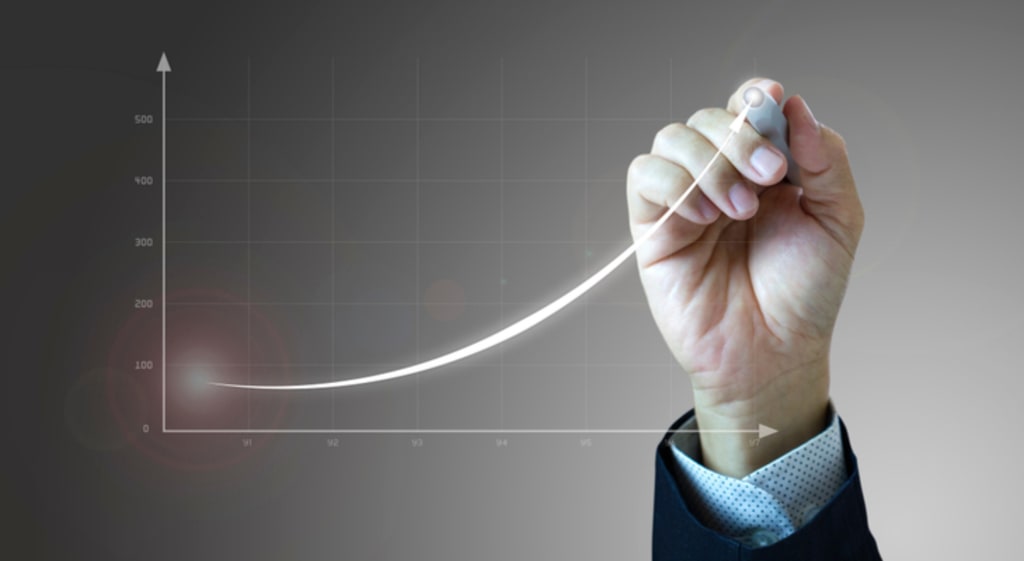The Phillips Curve: What Does It Tell Us About Inflation?
The Phillips Curve is back in the spotlight

The Phillips Curve is back in the spotlight.
The U.S. inflation rate is at an all-time high, with major consumer price gauges rising faster than ever before.
Inflation has risen in all major official measures, including the consumer price index (CPI).
The Labor Department has released recent data that shows the greatest increase in living costs since January 1991. It is 5.4%, according to the most recent figures.
As a result of a shortage in goods and limited supply of housing, food and furniture prices are on the rise.
Economists have an answer: Inflation is increasing as the market recovers from the Covid-19 pandemic.
We will be discussing the Phillips curve today, which is a key concept that highlights the inverted relationship between inflation and unemployment.
We'll tell you more about the curve, its role in mainstream economics, and why it attracts a lot of criticism.
The Phillips curve
The Phillips curve shows the inverted relationship between unemployment as a percentage and inflation rate.
This curve was first proposed by William Phillips in his paper " The Relation Between Unemployment and the Rate Change of Money Wage Rats in the United Kingdom 1861-1957," in 1958.
This curve was essential in the development of mathematical models that the U.S. Federal Reserve uses to analyze macro-economic policies.
What William Phillips learned from his studies
William Phillips, a New Zealand economist, had stints as a secret radio operator at a Japanese prisoner of war camp and as a hunter crocodiles and as an employee at an Australian gold mine.
Phillips' 1958 paper showed that wage inflation and the unemployment rate in the United Kingdom were negatively correlated during the 1861-1957 period.
He argued that employers don't increase wages when there is high unemployment, if at all, it's because workers are hard to find.
Employers tend to raise wages quicker when there is less unemployment because it is harder to lure workers. Soon, inflation in wages leads to an increase of the price of goods and services.
Two years later, U.S. economists Robert Solow & Paul Samuelson took Phillips's paper and made a 60-page paper pointing out that Phillips's findings also applied to America.
The downward-sloping line was named by the duo. It can be seen in a chart that plots the unemployment rate and wage inflation against each other, the Phillips Curve. This curve also holds for price inflation because prices and wages tend to move together.
Understanding the relationship between inflation and unemployment is important
It is crucial to understand the relationship between inflation and unemployment when deciding on monetary policymaking. Federal Reserve policymakers have two mandates: to promote price stability and maximum sustained employment.
Maximum sustainable employment is the highest level of employment that an economy can sustain while maintaining stable inflation.
On the other hand, price stability can be described as stable and low inflation. Inflation refers to an economic situation in which the prices of goods and/or services are experiencing a sustained, upward trend.
The Federal Open Market Committee, the Fed's principal monetary policymaking body, believes that an inflation rate of 2.2% is consistent with price stability. This is why the central banking keeps its inflation target at 2.2%.
Officials at the FOMC must keep both sides of their mandate in mind when making monetary policy decisions.
Critics of Phillips curve
The Phillips curve is a way to explain the relationship between economic activity and inflation. Every moment, Fed policymakers are faced with a tradeoff.
They can encourage employment and economic growth at the cost of higher inflation. They can also set up tools that fight inflation, but slow down economic activity.
Several prominent economists have questioned the Phillips curve. Famous economists Milton Friedman, Edmund Phelps and others suggested in the 1960s that inflation expectations could alter the curve.
Friedman and Phelps claimed that the long-term inverse relationship between unemployment and inflation was not a real phenomenon.
They stated that the curve could shift up or down over time due to changing inflation expectations.
Friedman says that once people get used to high inflation, they will continue to pay more for their goods and services, even if the unemployment rate is low.
Friedman proposed a shifting Phillips curve and his findings were realized when inflationary pressures rose after the U.S. government's Vietnam War spending.
In response to a dramatic rise in oil prices worldwide, the Phillips curve changed again in the middle of the 1970s.
He believes that unemployment can't be kept at a level above or below its natural level, regardless of the inflation rate.
But, the Phillips curve's long-term Phillips curve shows that economic activity does not move in a smooth fashion as aggregate demand rates increase and decrease.
It creates a clockwise loop with periods of high inflation and low unemployment that are balanced out by periods of slower inflation and higher unemployment.
Bottom line
The Phillips curve is a key component of monetary policies that increase employment and spur economic growth.
However, economists agree that the implications of the curve are only valid for a short time.
The situation of stagflation is not justified by the curve, where both the unemployment rate (and inflation) are extremely high.
Many economists believe that there is a tradeoff between inflation and unemployment. This occurs when these variables are pushed in opposing directions by the central bank's actions.
They believe that there must be a minimum level for unemployment to ensure that the economy can continue without inflation reaching extreme levels.
This is because of many reasons and it can be difficult to know why.





Comments
There are no comments for this story
Be the first to respond and start the conversation.